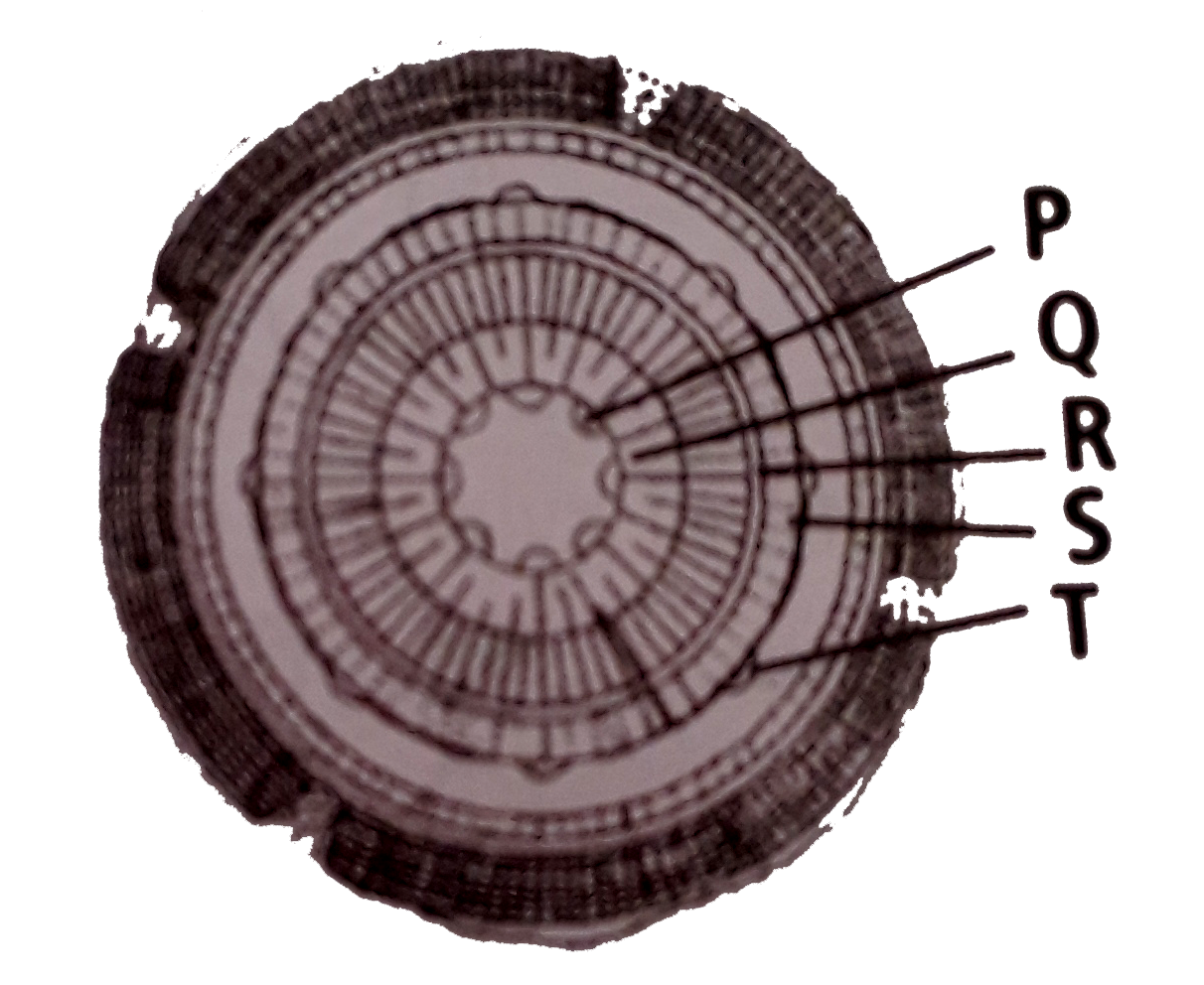An example of monocots showing secondary growth in stem is
sugarcane
Wheat
Maize
Yucca
The correct Answer is:D
Step-by-Step Solution:
1. Understand the Concept of Secondary Growth:
- Secondary growth refers to the increase in the thickness or circumference of plant organs, primarily stems and roots, due to the formation of secondary tissues. This growth is typically associated with dicotyledons (dicots) and gymnosperms.
2. Identify the Characteristics of Monocots:
- Monocots are a group of flowering plants that usually do not exhibit secondary growth because they lack a cambium layer, which is essential for the formation of secondary tissues.
3. Review the Options Provided:
- The options given are:
- A) Sugarcane
- B) Wheat
- C) Maize
- D) Yucca
4. Analyze Each Option for Secondary Growth:
- Sugarcane: A monocot that primarily exhibits primary growth with no significant secondary growth.
- Wheat: Another monocot that does not show secondary growth.
- Maize: Also a monocot, typically does not exhibit secondary growth.
- Yucca: A monocot known to exhibit secondary growth in its stems, despite the general rule that monocots do not show this growth.
5. Conclude the Correct Answer:
- Based on the analysis, the only option that represents a monocot capable of secondary growth is D) Yucca.
Final Answer: The example of monocots showing secondary growth in stem is Yucca (Option D).
---
- Secondary growth refers to the increase in the thickness or circumference of plant organs, primarily stems and roots, due to the formation of secondary tissues. This growth is typically associated with dicotyledons (dicots) and gymnosperms.
- Monocots are a group of flowering plants that usually do not exhibit secondary growth because they lack a cambium layer, which is essential for the formation of secondary tissues.
- The options given are:
- A) Sugarcane
- B) Wheat
- C) Maize
- D) Yucca
- Sugarcane: A monocot that primarily exhibits primary growth with no significant secondary growth.
- Wheat: Another monocot that does not show secondary growth.
- Maize: Also a monocot, typically does not exhibit secondary growth.
- Yucca: A monocot known to exhibit secondary growth in its stems, despite the general rule that monocots do not show this growth.
- Based on the analysis, the only option that represents a monocot capable of secondary growth is D) Yucca.
Topper's Solved these Questions
Similar Questions
A monocot showing secondary growth is
View SolutionPlants showing no secondary growth are
View SolutionSecondary growth is absent in
View Solutionsecondary growth is best observed in
View SolutionDicot stems show scondary growth due to
View SolutionGiven figure is a transverse section of dicot stem showing secondary growth in stellar and extra stellar region . Select the correct option for the parts labeled as a, b, c & d are respectively.

View Solution
Identify P,QltRltS and T in the given T.S. of dicot stem showing secondary growth and select the correct options
View SolutionAssertion . No secondary growth takes place in monocots. Reason. Secondary growth is not related to cambium.
View SolutionGive an example of a monocot seed.
View SolutionPlants showing anomalous secondary growth include
View Solution
